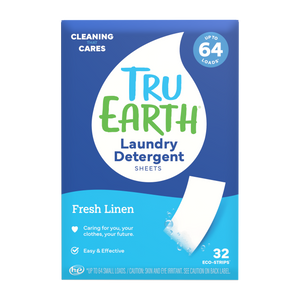In today's world, where environmental consciousness is on the rise, more and more people are seeking out green cleaning products that are effective yet environmentally friendly. However, with so many options available, navigating the world of green cleaning and deciphering the various labels and certifications found on these products can take time and effort.
This post will explore the ABCs of green cleaning, focusing on understanding the labels and certifications that indicate a product's environmental credentials. By familiarizing ourselves with these labels and certifications, we can make informed choices that align with our commitment to a greener and healthier planet.

The Importance of Green Cleaning
Green cleaning goes beyond just tidying up our living spaces; it involves using products and practices that minimize environmental harm and promote sustainability. Traditional cleaning products often contain harsh chemicals that can harm our health and the planet.
Green cleaning, on the other hand, utilizes ingredients and techniques that are safe for both humans and the environment. By adopting green cleaning practices, we not only create a healthier living environment but also contribute to the overall well-being of the planet.
Decoding Green Cleaning Labels
When browsing the cleaning aisle, we often come across labels such as "natural," "eco-friendly," or "biodegradable." While these labels may seem promising, it's important to understand their meaning and the criteria behind them.
Self-declared labels can be misleading, as no strict regulations govern their use. To ensure credible standards back a product's environmental claims, looking for third-party certifications is advisable. These certifications assure that the product has met specific environmental criteria and has undergone rigorous testing.
Environmental Certifications
Several well-known environmental certifications help consumers identify genuinely eco-friendly cleaning products. One such certification is EcoLogo, which evaluates a product's impact on human health and the environment. It considers factors such as biodegradability, reduced toxicity, and resource conservation.
Similarly, Green Seal is another reputable certification program that assesses the entire lifecycle of a product, including product formulation, packaging, manufacturing processes, and overall environmental impact. The EPA Safer Choice program focuses on identifying safer products for both human health and the environment, with strict ingredient safety and performance criteria. By looking for these certifications on cleaning product labels, consumers can confidently select products that have met rigorous environmental standards.
Eco-Friendly Ingredients
An essential aspect of green cleaning is the use of eco-friendly ingredients. Plant-based ingredients, such as essential oils, citrus extracts, and enzymes, are effective in cleaning and safe for the environment. These natural ingredients have minimal impact on aquatic ecosystems and do not contribute to air pollution.
In contrast, harmful chemicals like phosphates, chlorine bleach, and synthetic fragrances should be avoided. These chemicals can adversely affect human health and the environment, including water pollution and respiratory problems. By opting for products with eco-friendly ingredients, we can ensure our cleaning routines are effective and environmentally conscious.
Sustainable Packaging
In addition to the ingredients, the packaging of cleaning products also plays a role in their environmental impact. Sustainable packaging options include materials such as recycled plastics, biodegradable materials, or packaging made from renewable resources.
By choosing products with minimal packaging and packaging materials that can be recycled or composted, we can reduce waste and contribute to a circular economy. It's also important to properly dispose of the packaging, following local recycling guidelines to ensure it doesn't end up in landfills or pollute our environment.
Making Informed Choices
While labels and certifications are important, other factors should be considered when making eco-friendly choices. Researching brands' manufacturing practices and values can provide insights into their commitment to sustainability.
Look for companies prioritizing renewable energy, sustainable sourcing, and environmentally responsible production processes. Supporting local and Canadian-made green cleaning products reduces carbon emissions associated with transportation and strengthens local economies and communities. Considering these factors, we can make informed choices that align with our values and contribute to a greener future.

DIY Green Cleaning
Making your own DIY cleaning solutions using natural ingredients is an alternative to store-bought green cleaning products. Common household items like vinegar, baking soda, lemon juice, and essential oils can be used to create effective and environmentally friendly cleaning solutions.
These homemade cleaners are cost-effective and allow you to have full control over the ingredients and reduce packaging waste. However, it's important to note that proper usage guidelines and safety precautions should be followed when using DIY solutions.
The Future of Green Cleaning
As environmental awareness grows, the green cleaning industry evolves with new innovations and practices. Emerging trends include developing packaging-free cleaning products, refillable options, and advancements in biodegradable and plant-based ingredients.
The demand for sustainable and eco-friendly cleaning products drives the industry to explore more innovative solutions that reduce environmental impact while maintaining effectiveness. We can collectively contribute to a cleaner and more sustainable future by embracing green cleaning practices and supporting these innovations.
Making the Most of Green Cleaning
Understanding labels and certifications associated with green cleaning products is essential in making informed choices for a healthier home and a greener planet. By decoding labels, exploring environmental certifications, and considering factors beyond certifications, such as ingredients, packaging, and company values, we can actively contribute to a more sustainable future.
Incorporating eco-friendly cleaning practices into our daily routines benefits our health and the environment and sets an example for others to follow. Let's embrace the ABCs of green cleaning and create a cleaner, greener, and healthier world for future generations.

